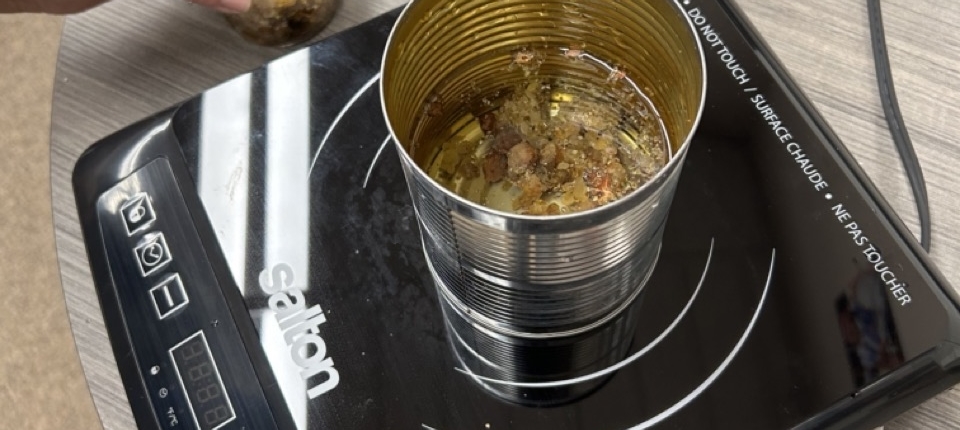Traditional First Nation plant medicine in the wintertime
Shania Henyu Van-Bibber & Jamie Romero Jimenez
Welcome to the sacred world of Traditional First Nation Plant Medicine in the Yukon!
Nestled amidst the pristine landscapes and rich cultural heritage of the Yukon. The traditional healing practices of the First Nations peoples have thrived for centuries. Here, the natural world is not just a backdrop but an essential part of healing and guiding individuals toward holistic well-being and harmony.
In this land of majestic mountains, sprawling forests, and winding rivers. Traditional healers draw upon ancient wisdom passed down through generations. From the elders steeped in ancestral knowledge to the younger First Nations embracing their cultural heritage. The practice of First Nation medicine is a living and breathing tradition.
The Yukon has plentiful of beautiful vibrant, colorful plants that thrive during the spring and summer seasons. Despite the Yukon’s cold weather for majority of the year. While harvesting during wintertime may not initially seem feasible, it is indeed possible. Although limited, the collection of traditional First Nation plant medicine during winter is not out of reach, you absolutely can harvest.
“Any medicinal medicine you harvest that has a flower will not be able to be harvested in the winter months. You can however harvest the roots of almost every single flowering plant.”
-Blake Lepine
Come with us to explore the rich tapestry of traditional First Nation plant medicine in the Yukon and discover the profound wisdom and healing power it offers.
What can you expect from traditional First Nations medicine in the Yukon?
1. Connection to Nature: Central to traditional healing is the deep reverence for the natural world. Plants, animals, and the elements are not merely resources but sacred allies in the journey toward healing and balance.
2. Holistic Approach: First Nations medicine recognizes the interconnectedness of mind, body, and spirit. Healing is approached holistically, addressing not only physical ailments but also emotional, mental, and spiritual well-being.
3. Cultural Respect: The practice of traditional healing is deeply rooted in cultural traditions and protocols. Respect for elders, ancestors, and the land is fundamental to the healing process.
4. Community Support: Healing is viewed as a communal endeavor, with support from family, community members, and spiritual guides playing a vital role in the healing journey.
5. Adaptability and Innovation: While grounded in tradition, First Nations medicine in the Yukon is also adaptive and innovative, incorporating modern knowledge and practices while maintaining its core principles.
Explore further about traditional First Nation plant medicine discovered during the winter season.
Refer to the attached interviews below. Which look into the expertise of professional and self-taught practitioners from First Nations born and raised in the Yukon
Join us as we embark on a journey of cultural immersion, spiritual growth,
and holistic wellness.
Interview with
Blake Nelson Shaá’koon Lepine
By Shania
Blake Lepine was born and raised in Whitehorse, Yukon. He is a member of the Carcross/Tagish First Nation and Dak`laweidí clan. Blake’s ancestral ties are his parents, Karen & Nelson Lepine and his grandparents Les & Marie Johns. His traditonl territories are in the carcorss/tagish southern lakes.
Blake takes pride in being a visual artist by trade, hes been a practing visual artist since he was 18 years old. He grauated from Pacific Rim College for hollistic nutriton and phyto thearpy. Blakes primary job is in education, he works a lot with the younger generations. His number one goal as a First Nation educator is “Trying to transition all of our traditional knowledge back into our kids”. Blake mission in life is to pass on as much of his traditional knowledge to the younger people the best he can.
Blake harvests when the seasons are transitioning usally at the tail end of spring. That’s when the plants are coming up fresh, vibrant, and beautiful. Blake has a give and take realtionship with the plants. Before he goes to harvest, if he has any left over plant material from the year prior. Blake will then make a big ginormous pot of tea with all of the plant material. He then feeds that tea to the plants.
Any nutrients from the plants in the tea, the other plant will intake and utilize. It is even better if you can use tea from the plant itself. For example if you are harvesting fireweed. You can then make a fireweed tea to give back to the fireweed you will harvest. It is a way of giving thanks to the plant and being appreciative. When it comes to berries and fruiting seeds from flowers. Blake will re-plant them and spread them around into the ground. So the plant can grow again.
Who are they? – Name, traditional name, clan (crow, wolf), First Nation, where they are from, age, job, interests.
Blake Lepine was born and raised in Whitehorse, Yukon. He is a member of the Carcross/Tagish First Nation and Dak`laweidí clan. Blake takes pride in being a visual artist by trade, hes been a practing visual artist since he was 18 years old.
How are they connected to Traditional Medicine?
Blake’s connection to traditonal medicine devopled from his attendance at the Pacific Rim College for hollistic nutriton and phyto thearpy. His Indigenous roots also play a part in his connection to traditional medicine.
How do winter medicines differ from summer medicine? (quoted from interview)
Any medicinal medicine you harvest that has a flower will not be able to be harvested in the winter months. You can however harvest the roots of almost every single flowering plant. The flower is just the reproductive organs of the plant. The majority of the medicine is stashed within the roots. So once the flower dies coming fall time, all the energy goes back into the roots. It is then preserved frozen into the ground until springtime when it can spring up again.
If you can learn how to identify the plants in the winter, what they look like after they went through the fall transition you will be able to harvest the roots from those plants in the winter. The majority of your berries as well if you know where your berry patch is in the winter. You can go there in the wintertime and dig deep below the snow to revel some frozen berries. Moss berries, blueberries, as long as they are not too exposed to much frost. They will actually preserve just like frozen fruit in your freezer.
Wintertime all of your tree medicines, the tree needles are actually the leaves of that plant. But they don’t shed them. The tree uses its needles to stash resins over the winter. They do this, so they do not freeze. They also push out the viscus sap or resin into the needles so that the animals won’t eat them. During the trees ability to preserve themselves. It actually makes it a very good time for us to harvest the tree needles. Spruce, pine, and tamarack trees are very good to pick from in the wintertime. There are three different types of spruce in the Yukon. Black, white, and blue spruce. Blue spruce is in the tree lines, where the willows start fading out. Black spruce grows by the swamps, they look shrivelled and kind of sad. White spruce is almost like a Christmas tree, the branches are very straight and vibrant green. They are all interchangeable in their medicinal effects. They are all focused on the lungs for breathing, air exchange. They allow your lungs to push mucus up and out. Any kind of common cough and cold can be cured with the tree medicine.
What does traditional medicine mean to them as an individual?
His number one goal as a First Nation educator is “Trying to transition all of our traditional knowledge back into our kids”. Blake mission in life is to pass on as much of his traditional knowledge to the younger people the best he can.
Harvest practices!
Blake harvests when the seasons are transitioning usally at the tail end of spring. That’s when the plants are coming up fresh, vibrant, and beautiful. Blake has a give and take realtionship with the plants. Before he goes to harvest, if he has any left over plant material from the year prior. Blake will then make a big ginormous pot of tea with all of the plant material. He then feeds that tea to the plants. Any nutrients from the plants in the tea, the other plant will intake and utilize. It is even better if you can use tea from the plant itself. For example if you are harvesting fireweed. You can then make a fireweed tea to give back to the fireweed you will harvest. It is a way of giving thanks to the plant and being appreciative. When it comes to berries and fruiting seeds from flowers. Blake will re-plant them and spread them around into the ground. So the plant can grow again.
“Part of my mission in life is to, try to pass on as much traditional knowledge to the young people the best I can.”
Interview with
Sarah Lennie
By Jaime
Who are they? – Name, traditional name, clan (crow,wolf), First Nation, where they are from, age, job, interests.
- She is Sarah Lennie, an Elder at the Samay Thia Lounge, in YU.
- Her roots come from the Inuit people, and her family name means “easy to laugh” from the northwest territories.
- Her parents and her people went to a winter camp and there got pregnant with her; She got her name from the grand mother (father side)
What is your connection to traditional medicine?
Her mother was a medicine women; She had interest in plants a their uses.
How do winter medicines differ from summer medicine?
There is no difference between both. We get our materials in the spring and use it all year in all the seasons. This is a thousand year old tradition, and it helps us to heal.
Summing up: they harvest it and preserve it to be used all year round.
In winter we made broth from the animals and it is a good medicine for the flu
How are you connected to Traditional Medicine?
Because of her mother. She delivered babies. The land gives us plants from the land and animals to heal ourselves. Her mom had the tattoos of endurance, strength and courage. Back then tattoos were made with bone needle.
Key message?
-
- We believe in good things offered to us by the Universe. Is up to us to do good or not, because we have free will
What traditional medicine means to them as an individual?
-
- I enjoy it because I can go by myself or in group with friends in a long walks in the land
- The plants are here to heal us
- Picking them, harvesting them is an special time
We don´t believe in luck. Is not from our culture.
The Making of Spruce Gum Tea:
A Journey into Traditional First Nations Medicine
By Jaime
In the heart of the Yukon wilderness, amidst towering spruce trees and the whispers of the wind, lies a tradition deeply rooted in the healing power of nature. It is here, guided by the wisdom of elders like Sarah Lennie, that we embark on the ancient practice of making Spruce Gum Tea.
To begin this sacred process, preparation is key. Before venturing into the woods, one must gather tobacco and dress appropriately, especially during the winter months when the chill of the air bites at the skin.
Led by the experienced hand of elder Sarah, our journey into the woods is a deliberate one. We tread carefully, seeking out the spruce trees that hold the precious gum, the essence of their healing medicine. With patience and reverence, we select only the healthiest trees, ensuring the gum is ripe and ready for the process.


















